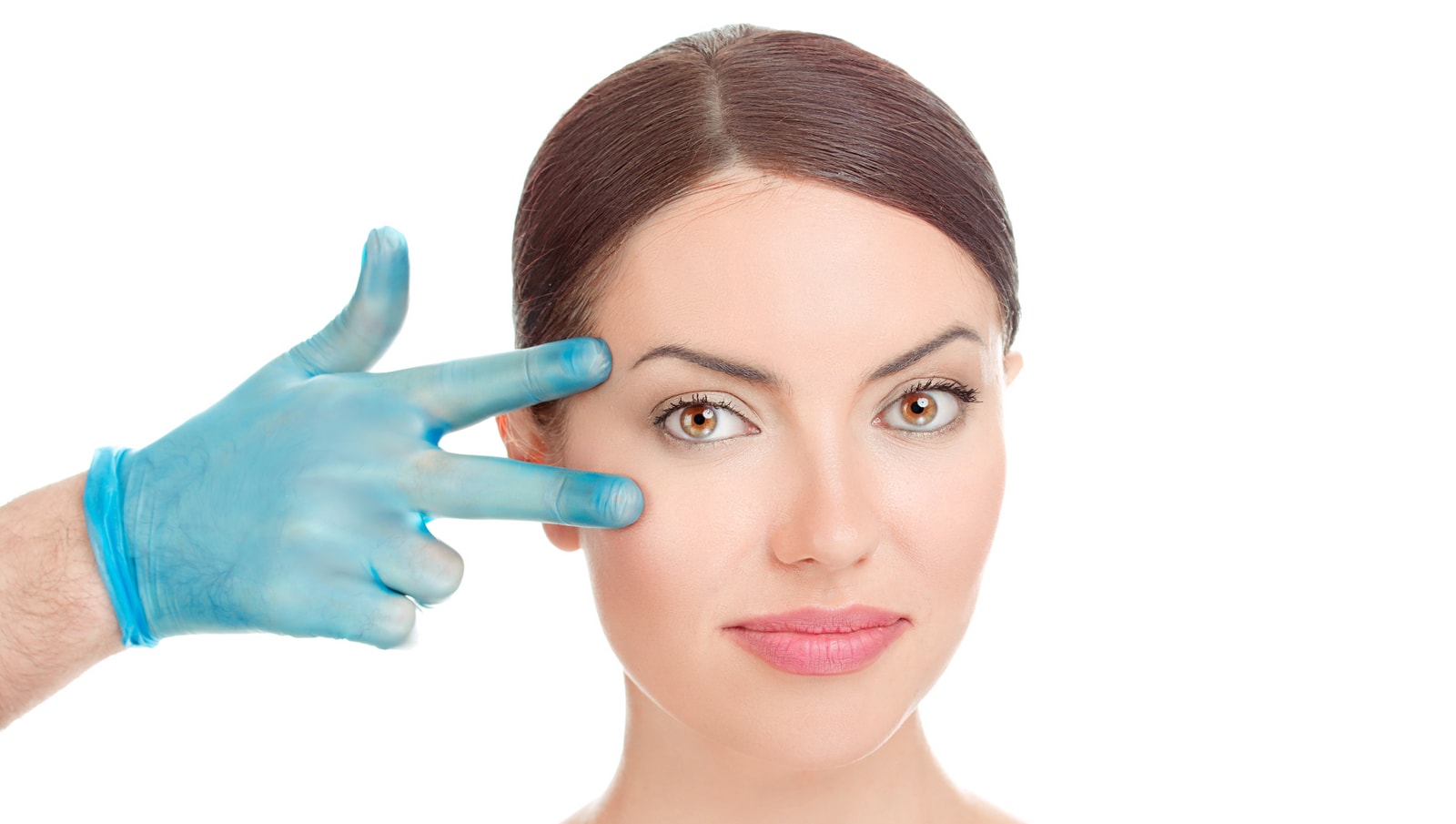
Non-surgical blepharoplasty is a non-invasive alternative to the traditional method that utilizes injections of fillers around the eyelids that are close to the bone. The injections elevate the skin and fill out the tear trough which is the space between the lower eyelid fat and the cheek. The injection adds volume to the area which also gives a more youthful appearance.
There are various fillers that can be used to add fullness and they are made by a number of companies. Some examples include Restylane, Juvederm, and Radiesse. The two that are most commonly used in the lower eyelid are Restylane and Juvederm. They plump the skin out in that area to achieve fullness.
Using fillers is recommended for older people who have some puffiness in the lower eyelid and need surgery to remove the fat. The fillers can also blend the demarcation, and minimize the need to have surgery by blunting the indentation and blending it better with the lower lid and the cheek.
The decision to have non-surgical blepharoplasty depends on the results desired by the patient as well as their anatomy. If there is a lot of extra eyelid fat, the only way to make it look better is to blend it. There are some people with pretty mature aging qualities even in their 30s and 40s. They hollow out a little bit so they can have the filler to blend it a bit better and to minimize the early signs of aging in that area.
In comparison to the surgical way of doing blepharoplasty, having the procedure performed with the filler or Botox takes about five minutes. Patients can come in at lunchtime and have it done.
They will have a little bruising because of the needle in the skin. If it is done over lunchtime, the patient can put makeup on it immediately. There is essentially no pain with the procedure.
Non-surgical blepharoplasty is normally used to treat the lower eyelids. Doctors do not put much filler in the upper eyelids.
The upper eyelids can be treated with Botox which is a neuromodulator and that means it paralyzes nerves. Botox can be used for a brow lift or injected into the lateral upper eyelid. This paralyzes the upper eyelid muscle which allows the muscles of the forehead to overtake that and helps the eyelid rise.
Botox takes three days to work so the results are not immediately apparent. However, the final results will last for up to three months. When it comes to neuromodulators to use on patients to paralyze the nerves, there are three choices. They are all the same but they are made by different companies. The one most everyone knows is Botox and the other two are Dysport and Xeomin.
Fillers will cause some bruising and swelling so the results will not be seen until the bruising and swelling goes away. In general, the results are visible after a few days. The final results with fillers can last six months to a year to maybe a year and a half. On average, they last six to nine months.
Fillers and Botox do not produce anything close to the results that a person gets with a surgical blepharoplasty. First of all, the upper eyelid is made of extra skin and the only way to fix it is to cut it out. Most fat in the upper or lower levels needs to be removed by surgery. That is why it is called nonsurgical blepharoplasty; it is because it is done with a filler and not the traditional method of blepharoplasty. Also, the results of non-surgical blepharoplasty are temporary as opposed to a true blepharoplasty procedure.
Complications are rare. If the Botox is injected too close to the upper eyelid muscle, it can be paralyzed and cause an eyelid droop. The droop can be counteracted with an eye drop.
If the fillers are not injected correctly, the patient can get lumps. Hyaluronidases can be injected into the lump in order to dissolve it. Injecting it too close to the skin can cause skin death, necrosis, and scarring. There have been reported blindness cases in people that do not inject to the right area. They can inject into an artery around the eye and it can travel into the back of the eye and clot it off. This rarely happens but the patient can go blind.
There is bruising that will happen after the procedure that should last around a week. Sticking a needle in the skin around the eyelid will cause some bruising. There will not be much bruising with Botox but the filler causes more bruising because it is more invasive and closer to the bone.
While the results from non-surgical blepharoplasty are temporary, many patients prefer it over traditional blepharoplasty since it is a non-invasive procedure. Patients should consult with an experienced doctor to determine if the results they want can be achieved through the non-surgical method.
Written by Cosmetic Town Editorial Team - MA
Based on an exclusive interview with Robert Wald, MD in Fullerton, CA